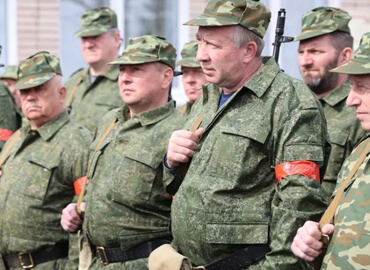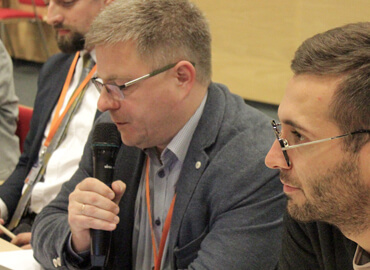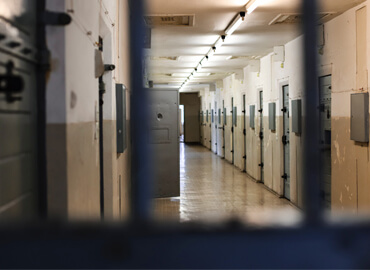The Russian information war against Ukraine was unleashed by Russia much earlier than the Kremlin sent its troops there and began supporting its armed agents to prevent democratic reforms in Ukraine and its advance towards a democratic Europe. Today, Russian propaganda is directly involved in supporting the criminal actions of the Belarusian dictatorial regime with the goal of having it survive in the face of total opposition from Belarusian society. At one time – at the turn of the 20th and 21st centuries – Slovakia, a small Central European state, also faced attempts by Russian propagandists to prevent it from moving forward towards Euro-Atlantic integration. Fortunately for Slovakia, as well as for other Central European states, the authoritarian regime in Russia was not so consolidated at that time and the military and economic potential of Russia was not so strong that it could achieve the slightest tangible results in this area. All Central European states, including Slovakia, eventually joined both the EU and NATO.
Having suffered defeat in its attempts to impede the movement of the Central European peoples towards the West, Russia, already working under new geopolitical conditions, has not abandoned attempts to influence the internal development of these states and their foreign policy. Over the past few years, Slovakia has been undergoing particularly intense attempts to increase Russian influence here through mechanisms of propaganda.
Internal conditions for Kremlin propaganda
A distinctive feature of Slovakia is that there are no Russian media actors in the country who distribute their content in the national (in this case, Slovak) language. There is neither a Russian television channel broadcasting in Slovak nor a print publication in Slovak. For those who are especially interested there are, however, some alternatives in the neighborhood, for example, the Russian Sputnik, which is published in Czech. The fact is that Slovaks perfectly understand the Czech language (both languages are so close that Czechs and Slovaks communicate freely with each other in their own languages without translation and without switching languages), and it can be assumed that some part of the population may get information from Sputnik in Czech or Sputnik editions in Hungarian. It is possible that some part of the Slovak citizens of Hungarian origin, living mainly in the south of Slovakia, can use the “information services” of the Hungarian edition of Sputnik. But this is still a rather narrow audience.
Information channels in Russian in Slovakia are barely visible and are not particularly popular. Regular monitoring of television broadcasting does not even allow us to find out the level of popularity of Russian television channels, as the number of those who watch them is so negligible.
Nevertheless, the problem of Russian information penetration and the spread of Russian narratives in Slovakia exists and is by no means becoming less significant.
The question arises how this is possible at all. There are no Russian media or other information platforms in the Slovak language in Slovakia, there is no wide audience for Russian media products in Russian in the country, and the problem of Russian information penetration nevertheless exists.
The answer is simple. Since about 2014 in Slovakia, after the start of Russian aggression in Ukraine, a fairly developed ecosystem of local agents (political and media) of Russian information and propaganda influence, using their native language, has emerged and exists in relatively comfortable conditions. They are the main distributors of locally produced Russian propaganda.
Actors of Russian influence
Among these actors are party leaders. Of the current leaders, these are primarily representatives of the opposition right-wing extremist, neo-fascist People’s Party Our Slovakia (ĽSNS), individual figures of the, until recently, ruling party Direction – Social Democracy (Smer-SD), representatives of the Slovak National Party (SNS), members of the half-dead Slovak Communist Party (KSS), as well as former ministers who were once part of nationalist and conservative parties.
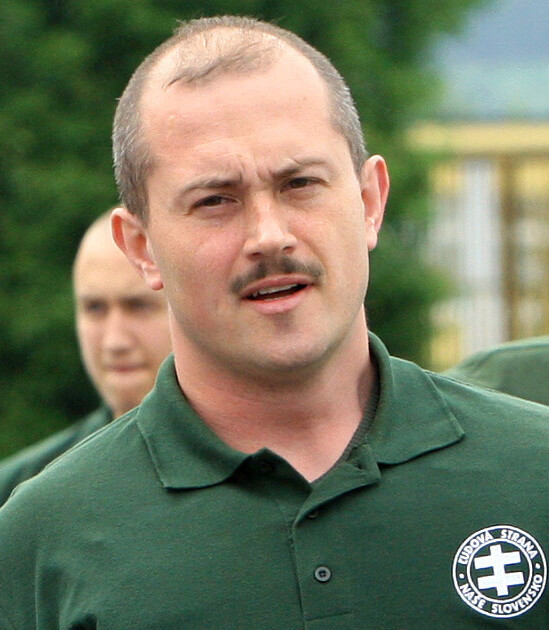
ĽSNS leader Marian Kotleba
These figures regularly visit Russia and, returning home, do not miss the opportunity to tell their compatriots about the remarkable successes Russia has achieved in its forward movement towards even more impressive achievements. Some of them are quite prolific authors of articles posted on blogs or social networks; in their work, the theme of Russia is visibly and clearly present.
And yet, no matter how active these Slovak politicians are in their quest to find a grateful audience for the dissemination of propaganda narratives close to the Kremlin, they are not the main actors of Russian influence in Slovakia. This role is played by local pro-Russian “alternative” disinformation and conspiracy media – internet newspapers, portals, online radio, and magazines.
The most famous and popular of this group is the online daily newspaper Hlavné správy, which, among other things, publishes material drawn from pro-government Russian sources, including “garbage” online resources. The newspaper presents itself as a standard media outlet with a particular view of the world. There is a mix of everything here – news from information agency services, redistributes from the local and foreign press, messages found on the internet, and their own editorial materials. What brings this mixture together? Foremost, it is mistrust of liberal democracy and universal social values, criticism of the West and its political and economic structures, the belief that Slovakia entered these structures by mistake and that EU and NATO membership is not beneficial for it. Sympathy for radical and national-populist political forces as well as a clear gravitation towards conspiracy interpretations of events in the country and the world coupled with a clearly expressed pro-Russian position also play an important role.
Even more radical is the monthly Zem a Vek, a typical disseminator of anti-Western and pro-Russian conspiracy theories, supporting the foreign policy of the current leadership of the Russian Federation in everything, including all its aggressive “geopolitical” undertakings. The magazine was especially active during the Russia’s open aggression towards Ukraine, enthusiastically supporting the annexation of Crimea and the occupation of a part of Donbass and extolling the “liberation mission” of the Donbass separatists. Among other things, the magazine is distinguished by its sharp anti-Semitism. A case is now being brought against the editor-in-chief on charges of inciting hatred towards Jews.
Several years ago, the editor-in-chief and the publisher of this magazine visited the Russian Embassy in Bratislava. At a meeting with the Russian ambassador, they asked him to help them in obtaining funding from Russian sources. An audio recording made at the meeting in the embassy building (it is still unclear who made this recording) attests to the fact that the Russian ambassador promised the visitors to help them establish contacts in Moscow. Indeed, a few months later, the “dear Slovak guests” were greeted with honors as “prominent representatives” of the Slovak journalistic community at the editorial office of the Moscow magazine Mezhdunarodnaya Zhizn (International Life), which organized an editorial Slovak-Russian roundtable. (However, it is still not known, as a result, whether the Bratislava “alternative” media emissaries will obtain some financial support from Moscow.)
Another “cult” Slovak media resource, the internet radio station Svobodny vysielač, is very active in distributing pro-Russian materials. It fully corresponds to the characteristics of an alternative disinformation-conspiracy “alternative” media. Here you will find anti-Semitism, anti-Westernism, anti-liberalism, radical Euroscepticism, sympathy for right-wing extremist views, and, as it should be for these kinds of resources, a pro-Russian orientation.
The public of this corresponding type converges on these and other similarly oriented media. These are supporters, to put it mildly, of extraordinary theories of the development of nature and society, radicals of all stripes, ardent nationalists, fighters against “LGBT,” people who do not trust the West and, in general, anyone except like-minded people. They are opponents of European integration, adherents of numerous conspiracy theories, and those who are nostalgic for the communist past.
It is these media, in conjunction with other online platforms, that are the main conduits of Russian information and propaganda influence and the conveyors of pro-Russian narratives.
A trinity of systemic narratives
Among these narratives the systemic narratives stand out; that is, those that call into question the very choice Slovakia made in its development after the fall of the communist regime. And this choice is well known – it is the implementation of liberal political and socio-economic reforms leading to the formation of a liberal democratic regime, joining the process of European integration and transatlantic partnership, and entering into allied relations with the largest Western states. All these mutually intertwined lines are an integral part of the foundation of the social model (system) that currently exists in the country.
It is against this system that the main narratives disseminated by actors of Russian influence in Slovakia are directed. We will consider three such narratives.
- “Defeating Liberal Democracy”
The first of these is the narrative about the unsuitability of liberal democracy – that the liberal-democratic concept is outdated, has become a relic of the past, and should be replaced by another concept based on national, traditional, conservative, and collectivist values. According to this narrative, liberal democracy is ineffective, corrupt, and does not create optimal conditions for the freedom of its citizens, for democratic governance, and respect for human rights. It is supposedly just a tool for strengthening the influence of large states (U.S., Germany, Great Britain, France) in the world and in Europe and harms small European states, which, for their own good, must break free from this dominance (in other words, leave the EU and NATO) and develop closer cooperation with Russia.
To question the suitability of liberal democracy as a social system existing in the countries of Central and Eastern Europe, its opponents must retroactively relativize and actually reject the results of the transformation process in the countries of Central and Eastern Europe after the fall of the communist regimes and to refuse to participate in the process European integration. The purpose of the dissemination of the said narrative is also to re-evaluate the type of relations that existed in the so-called socialist camp under the leadership of the USSR in retrospect – to characterize it as better and more appropriate than relations between liberal democracies that are part of the EU and NATO, supposedly basing this on equality, mutual assistance, and consideration of national characteristics.
In order to discredit liberal democracy, local actors of the Russian propaganda machine employ all sorts of clichés and conspiracy falsehoods regarding the unlimited European bureaucracy (“the dictatorship of Brussels”), a certain European homosexual lobby that is turning Europe into “Gayrope,” about the “multi-culti” communities that are supposedly seeking to destroy European culture and Islamize the old continent through waves of migration, etc.
It is obvious that the propaganda directed against liberal democracy as a social system is directly related to the type of interaction with the West that the current Russian leadership has chosen for itself. Russia perceives the West as a rival, an enemy, and seeks to weaken its foundations as much as possible. In analyzing the political and propaganda steps the Russian authorities have taken we can conclude that the Russian state is currently seeking to eliminate liberal democracy because it constitutes the basis for and backbone of the collective West. This is the strategic goal of the current Russian leadership and every opponent of liberal democracy today is its ally – strategic or situational.
Through its propaganda activities in the Central European region, Russia is trying to find weak links in the community of liberal-democratic states to instigate processes of its disintegration from within.
These efforts, among other things, proceed from the fact that there are actors in Central European countries, including Slovakia, who seek to play an active role in the destruction of liberal democracy. These are radical nationalists, right-wing extremists, the radical left, ideological heirs of the communist regime, and, not least of which, corrupt businesses for which the principles of a transparent economy, adopted in the EU, are simply unacceptable.
- “Slavic Brotherhood”
The second systemic narrative that actively uses Russian propaganda in Central and Eastern Europe regards the special role of the Slavic peoples and the need to establish as close relations between them as possible, which in the future should radically affect their development, the organization of their societies, and international obligations of their states. The central position in this concept, of course, is occupied by Russia, acting as the leader of the Slavic world and defender of the Slavic peoples.
The cornerstone of the concept of Slavic solidarity and brotherhood in its current form is the idea that the ethnic factor (especially the linguistic and cultural affinity of nations) is more important than the choice of a certain type of social organization and position in the system of relations with other states. According to this concept, the states created by the Slavic peoples should be closer to Russia, regardless of what political regimes exist in these states and in Russia. In accordance with this concept, democratic states of Central and Eastern Europe with a Slavic population should strive for an alliance with an authoritarian, undemocratic, and great-power Russia, but not for an alliance with the democratic states of the West, created by the Anglo-Saxon, Germanic, Romanic, and other peoples.
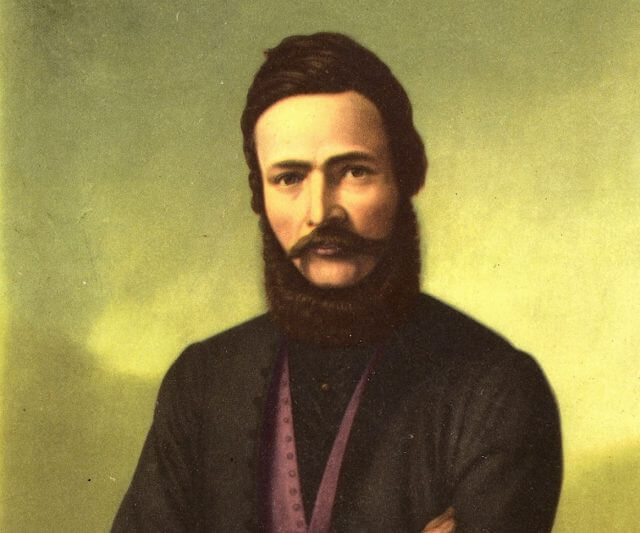
In Slovakia, this narrative receives a certain public response due to the fact that there has been a particular line of thought for more than a century and a half, the bearers of which appeal to the ideological heritage of the 19th century national figure Ludovit Stur – an important historical figure considered key for the formation of the linguistic and cultural identity of the Slovak nation. In his work “Slavism and the World of the Future” Stur wrote about the meaning of the history of the Slavs and Slovaks and came to the conclusion that the optimal and only meaningful choice for all European Slavs, including Slovaks, who did not have their own independent statehood at that time, was to join Russia and, bringing about a de facto dissolution into the Russian nation, using the Russian language as the official national language and with a corresponding transition from Catholicism and Protestantism to Orthodoxy. In Stur’s views, one can find elements characteristic of the bearers of the idea of rapprochement between Slovakia and Russia in later historical periods, especially dissociation from the liberal West and emphasizing the particular values of the Russian nation and the Russian state.
The paradox here is that the person who, during his life (and for more than a century and a half after his death – that is until now) was and is currently considered the personification of the aspirations of the Slovaks regarding their own independent national existence, proposed to his people such a decision of its historical fate that, if implemented, would mean the Slovaks would gradually disappear as a separate nation along with their own language, culture, and historically inherited confessional characteristics.
Today’s reality, however, is that Slovaks were inclined towards a different historical choice and Stur’s ideological legacy was not considered. Like the overwhelming majority of European Slavic peoples, at the turn of the 20th and 21st centuries, Slovaks decided that their fate and future would be linked to a democratic and free West, with successful projects of European integration and transatlantic partnership. These integration projects are based not on linguistic and ethnic affinity, but on the priority of universal human values (freedom, democracy, human rights, and an open society).
Today, Slavic Slovakia, along with Slavic Poland, Czechia, Bulgaria, Slovenia, and Croatia – following these countries’ successful implementation of internal democratic reforms – is a member of the EU and NATO. Slavic Montenegro and North Macedonia also recently joined NATO and are determined to join the EU, which Slavic Serbia and Bosnia and Herzegovina, and in the future, Slavic Ukraine (and possibly even Slavic Belarus) would like to join.
Russia’s policy towards Ukraine, which in 2014 became the object of open aggression from its larger Slavic neighbor as punishment for the fact that its people supported movement along the path of democratic reforms and European integration, testifies to the idea that Slavic brotherhood serves Russia today (as it often was in the past) to mask aggressive intentions that run counter to the national interests of the Slavic peoples.
- “The self-interested, predatory West”
The third narrative used by Russian propaganda in Slovakia is the narrative of the self-interested, greedy West, whose goal has always been (and remains) the enslavement of small Central European peoples. The entire process of post-communist transformation of the Central European states after the fall of the communist regimes is presented in this narrative as a deliberate process of conquering dominant positions by Western states, conquering local markets, taking control of natural resources, depriving Central European states of national sovereignty, and involving them in conflicts that the West allegedly unleashes on his strategic rivals (primarily with Russia). Small- and medium-sized Central European countries figure in this narrative almost as defenseless victims of foreign powers’ ambitions and interests and at the mercy of Western political and economic predators.
One of the goals of the dissemination of this narrative is to accustom the local community to the idea of the immanently limited sovereignty of the Central European states and the inability of Central European countries to independently choose their own destiny. That Central Europe is doomed – just like in the past – to exist in a subordinate position relative to stronger international players and that the western direction in the geopolitical orientation of the region is disastrous for the peoples of Central Europe.
This narrative, however, has significant limitations when attempting to disseminate it. It is even farther from depicting reality than the previous two. The argument refuting its basic postulates is the result of social transformations achieved by the countries of Central Europe. Thanks to these reforms, carried out, among other things, with the intention of joining the EU and NATO, the lives of citizens in these countries are more comfortable and secure than ever before in history. Citizens of Central European countries live in free societies, in stable democracies with guaranteed borders and balanced interstate relations, with a functioning economy, with freedom of movement, the opportunity to study, work, and live where they want, and employing the results of outstanding technological and social innovations that are ripe in the bosom of a free and democratic West. Thanks to the huge influx of foreign investment, Western know-how and assistance from EU funds in the pre- and post-accession period, the economies of Central Europe, including the Slovak economy, are incomparably more efficient today than at any time in the past. When Slovakia joined the EU in 2004, its economic performance was evidenced by the fact that the country was at 57% of GDP per capita of the EU average. After 15 years of EU membership, this figure has grown by 20%.
An effective antidote
The range of pro-Russian narratives that have been circulating for quite a long time in Slovakia is, of course, much broader and is by no means exhausted by the three systemic narratives mentioned above. There are also numerous myths afloat about the reasons for the aggressive Russian intervention in Ukraine. These are tales about the “anti-Russian” color revolutions in Central and Eastern Europe, which, allegedly inspired by the West, began in Budapest in 1956, continued in 1968 in Prague, and then swept across Central Europe in 1989, and reaching at last Ukraine, Georgia, and now Belarus in the 21st century.
The experience of Slovakia suggests that the most effective antidote to these and similar myths disseminated through Kremlin propaganda is the firm determination of citizens not to deviate from their planned path towards freedom, independence, and democracy.
***
This article is also available on Visegrad Insight and published as part of the Prospect Foundation project “Online Media Literacy for Editors and Administrators of Social Media Public Pages”, managed by iSANS and supported through grants from the International Visegrad Fund.
Материал доступен на русском языке: Российские нарративы в Словакии: кто и как их здесь распространяет







